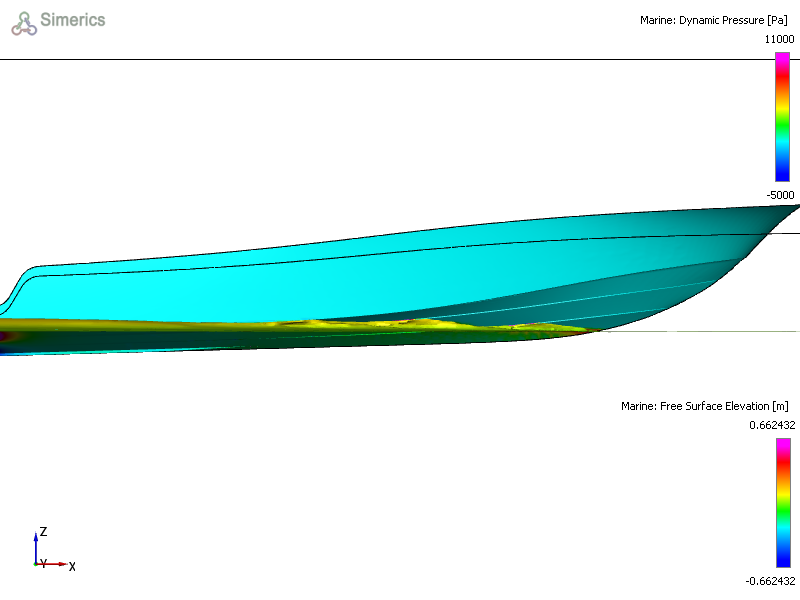CROSSOVER 27
Inshore/Offshore Perfection
Inshore and offshore fishing versatility is only possible if you can comfortably get to the fish – no matter where they are!
To make this possible we developed our own unique hull design.
Depending on engine selection, the Catch CROSSOVER 27 floats in only 12 to 13 inches of water without sacrificing passenger comfort. It rides great in a bay chop and offshore.
Our incredibly shallow draft is not exaggerated. 12 to 13 inches is with normal operating loads.
If you completely load the boat down with 6 adults, full tank of fuel, full live wells, a bunch of gear onboard, it will float in only 15 inches. We don’t know of another fishing boat this size that can brag about this shallow of a draft without sacrificing the ride and passenger comfort.
Engineering the Ultimate Dual-Purpose Vessel: The Power of Computer Design and Simulations
Computer simulations, particularly Computational Fluid Dynamics (CFD), offer unparalleled precision in observing and measuring phenomena that are hard to assess in real-world conditions.
Rigorous simulations were pivotal in ensuring a ride that is safe, comfortable, and dry. Through CFD, we meticulously refined the hull’s bottom design, enhancing performance and allowing for direct comparisons with other vessels. The controlled environment of computer simulations enables the replication of identical conditions, which is crucial for the accurate evaluation of various design iterations. This capability allows for swift design modifications based on simulation outcomes.
Extensive testing and iterative design adjustments, spanning hundreds of hours, culminated in a highly efficient, shallow-draft hull with a comfortable dry ride. The ride quality is comparable to similar size, deep-V offshore boats under typical operating conditions.
Engineering the Ultimate Dual-Purpose Vessel: The Power of Computer Design and Simulations
Computer simulations, particularly Computational Fluid Dynamics (CFD), offer unparalleled precision in observing and measuring phenomena that are hard to assess in real-world conditions.
Rigorous simulations were pivotal in ensuring a ride that is safe, comfortable, and dry. Through CFD, we meticulously refined the hull’s bottom design, enhancing performance and allowing for direct comparisons with other vessels. The controlled environment of computer simulations enables the replication of identical conditions, which is crucial for the accurate evaluation of various design iterations. This capability allows for swift design modifications based on simulation outcomes.
Extensive testing and iterative design adjustments, spanning hundreds of hours, culminated in a highly efficient, shallow-draft hull with a comfortable dry ride. The ride quality is comparable to similar size, deep-V offshore boats under typical operating conditions.
CROSSOVER 27 Computer Simulations – Computational Fluid Dynamics (CFD) and G-Force Analysis in Wave Simulation
Turn Stability Analysis
Shallow draft hulls often encounter a sliding issue during turns which can compromise both the maneuverability and safety. Recognizing this, we prioritized the elimination of sliding in turns as a crucial element of our design. Through careful consideration of hull shape, weight distribution, and hydrodynamic principles, we engineered a hull that maintains its tracking even in tight maneuvers, ensuring stability and predictable performance during turns.
We’d love to hear what you think!
We're excited to introduce the first center console with true inshore/offshore capability. We've put a lot of effort into designing and crafting this vessel to ensure it provides the best experience for our customers. We value your opinion and would greatly appreciate any feedback you have.




